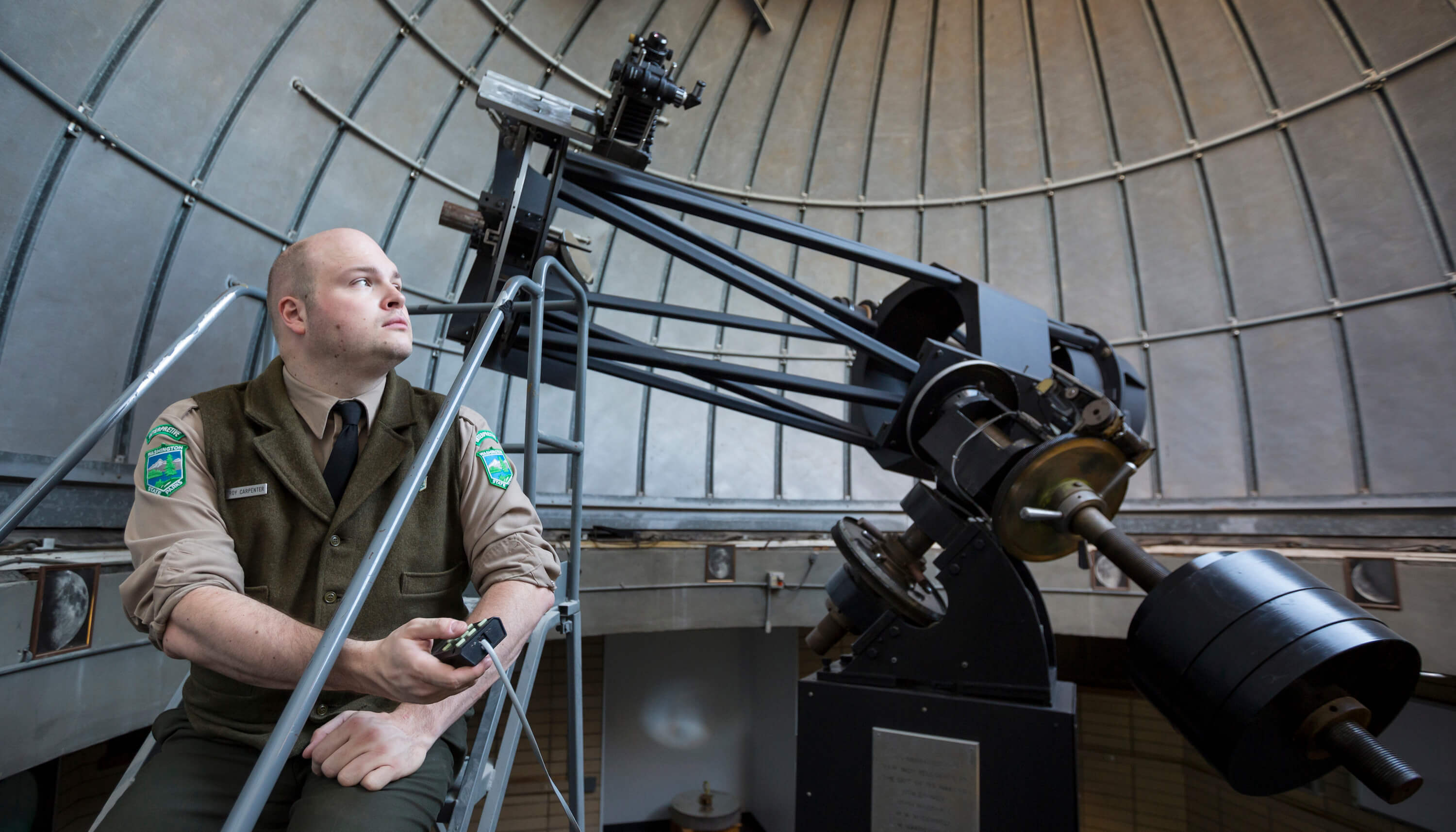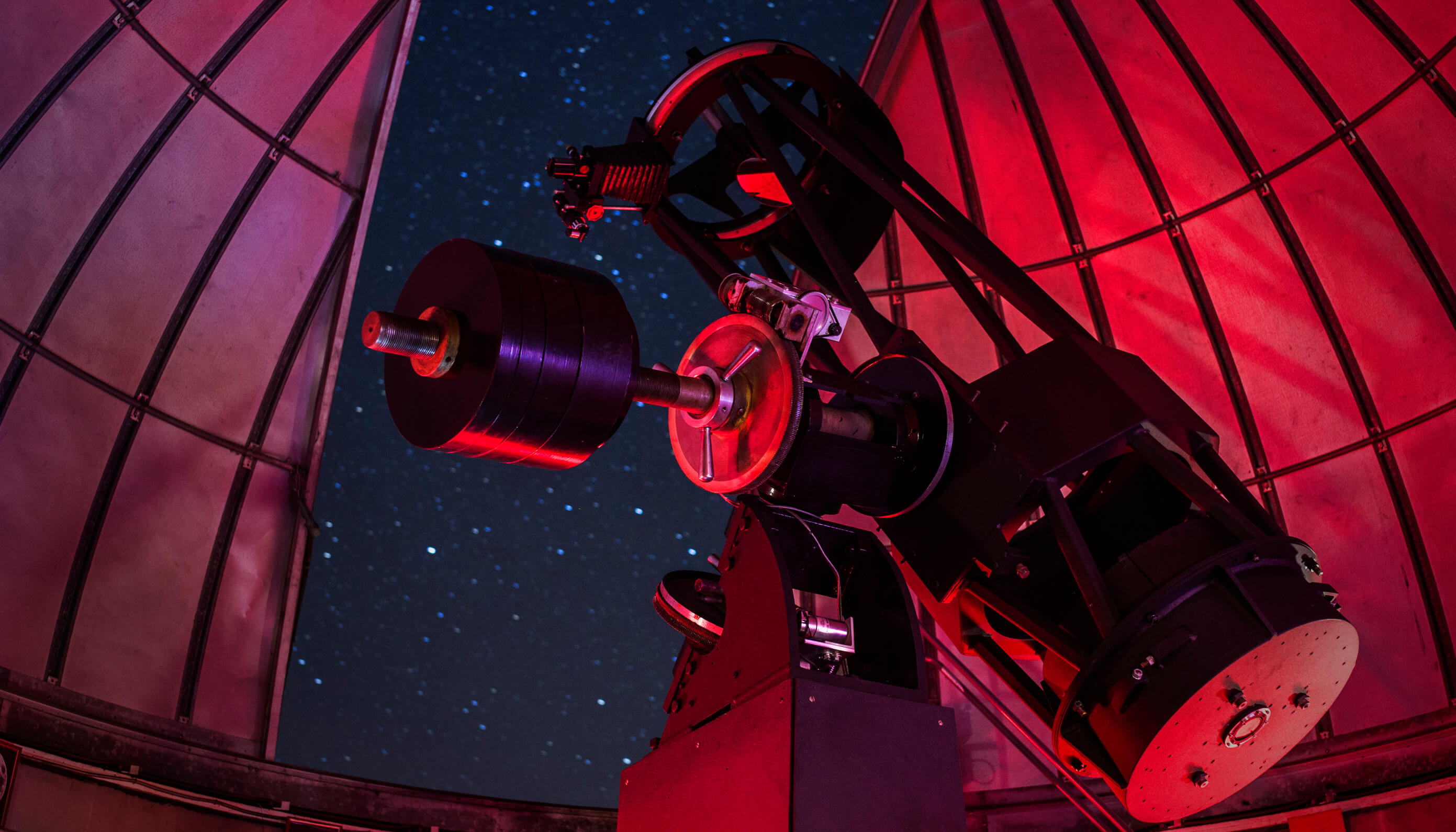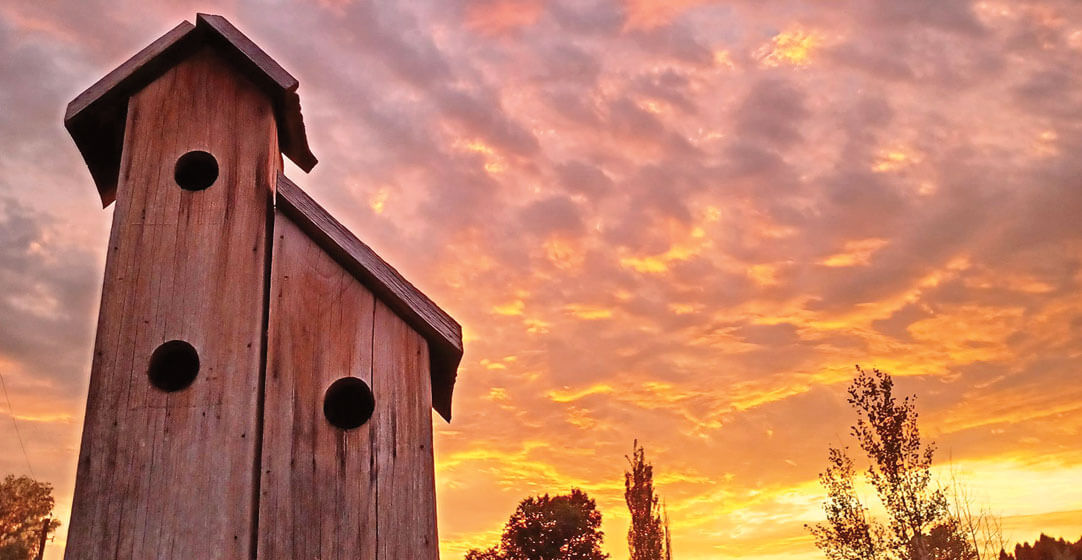Cross Time and Space With Goldendale Observatory’s Troy Carpenter
If you’re brave enough to climb a ladder and peer through a piece of glass, you can see millions of years into the past.
It’s not time travel, but a telescope: the 24.5-inch reflector in the dome of the recently expanded Goldendale Observatory in Goldendale, Washington, where visitors can see light that started heading toward Earth 2.5 million years ago from the Andromeda Galaxy.
“That happens to be the most distant thing we regularly show people,” says Goldendale Administrator Troy Carpenter.
He led the $5.4 million construction of a bigger observatory campus with new exhibits, landscaping and restrooms, more theater space and parking, with a new lot designed to better shield stargazers from the harsh glare of headlights. The public observatory is the most unique and modern of Washington State Parks’ 13 interpretive centers.
Because of COVID-19, please take recommended safety precautions if you are planning a future trip, and always check the availability of services, events, amenities and other details before you go.

What’s special about Goldendale?
“Goldendale is dark enough that you can see the whole Milky Way from horizon to horizon, something many visitors have never seen. We have 300 days of sun. Spring and summer, it’s pretty much always clear. The winter is reliably cloudy, but some of the best shows we’ve ever done were on cloudy, rainy or snowy nights. People have a lot of fun in the classroom and we take them around to show them the equipment. People find the telescope interesting to look at, not just to look through.”
What should we expect?
“I’m trying to make a mad scientist or James Bond villain atmosphere at the facility where it’s more than just an observatory: fun, neat, unusual and high-tech. We encourage everybody to come, for everyone of all walks of life to be welcome. It’s not a one-directional presentation. People can ask anything they want. And it leads to all kinds of fun and entertaining moments and we learn a lot. We’re adding lots of technology. Instantly answering a question by putting graphics or animations on screen is very helpful.”
How can visitors maximize their experience?
“Come on time for our shows or a little early to see the new exhibits. Dress warm and consider the weather and the moon phase — you can check our website for both. A full moon is the worst possible time to come and the worst thing for viewing the Milky Way, and it’s not even a good time to see the moon.”
Any advice for viewing the night sky?
“Get your phone away from your face because the light will cause you to lose your night vision.”

How unusual was the 2019 Mercury transit?
“Transits of planets are very rare events. We had a Venus transit in 2012. The next one will not be until 2117. Roughly 13 Mercury transits happen per century, so you can see more than one in your lifetime. In some ways it’s more interesting than an eclipse to see a planet going across the sun. Unlike a Venus transit, Mercury is so tiny that you need magnification to see it.” (Remember not to look directly at the sun without eye protection such as solar filters or eclipse-viewing glasses.)
What’s your favorite celestial object?
“Orion Nebula. It’s amazing-looking through a telescope. Space photographs are often the products of minutes or hours of time exposure, but the Orion Nebula is so bright that it actually does look like it does in the pictures. It’s easy to find right under the famous Belt of Orion, and it’s one of the nearest stellar nurseries — where baby stars are being born — and you can see baby stars through the telescope. It’s 1,400 light years away. That sounds like a colossal distance but it’s considered a nearby object, which helps to explain how big the Milky Way Galaxy is.”

Want to Find Darker Skies?
Light pollution maps online can help plan trips to dark sky destinations such as Brooks Memorial State Park northeast of Goldendale, the Central Idaho Dark Sky Reserve and Craters of the Moon National Monument.
– Written by Jim Hammerand
–This column originally appeared in the AAA Washington member publication, Journey, Novembe/December 2019 edition







